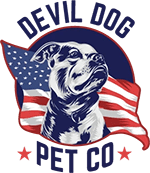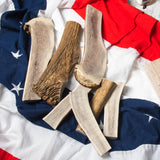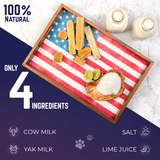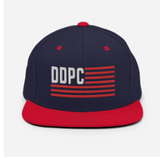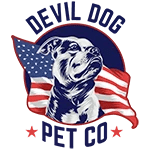Key Takeaways
- Healthy yak chews for dogs serve as more than just snacks; they are essential tools for effective dog leadership.
- Choosing premium yak chews promotes mental stimulation and helps prevent destructive behaviors in dogs.
- Natural yak chews contribute to better dental health, potentially reducing veterinary expenses.
- Providing yak chews supports proactive enrichment, which is preferred over reactive behavior corrections.
- Devil Dog Pet Co. emphasizes the importance of stepping up as a dog owner through the use of quality natural treats.
Table of Contents
- The Mission: Why Real Dog Leaders Choose Natural Yak Chews
- What Are Yak Cheese Chews? Anatomy, History, and Ingredients
- The Health & Behavioral Benefits of Yak Chews (Science-Backed, Real-World Results)
- Suitability: Are Yak Chews Right for *Your* Dog?
- How to Choose the Right Yak Chew: Sizing, Shape, and Strength Selection
- The Right Way to Introduce Yak Chews – Step-by-Step Guide for Maximum Safety & Engagement
- How to Use Yak Chews to Train, Soothe, and Enrich (Beyond "Give and Let Chew")
- Yak Chews vs. Other Chews: Full Comparison Table
- Ethical & Nutritional Standards: What Makes a "Healthy" Yak Chew
- Safe Chewing: Monitoring, Preventing Issues, and Maximizing Longevity
The Mission: Why Real Dog Leaders Choose Natural Yak Chews
Every surrendered dog tells the same story: an owner who gave up instead of stepping up. At Devil Dog Pet Co., we believe healthy yak chews for dogs natural treats represent more than snacks, they're tools for Extreme Dog Leadership. When you hand your pup a premium yak chew, you're choosing mental stimulation over destruction, dental health over vet bills, and proactive enrichment over reactive corrections.
For dogs who need a longer-lasting challenge, our Monster - Himalayan Dog Chew is a top choice for power chewers and larger breeds.
What Are Yak Cheese Chews? Anatomy, History, and Ingredients

Himalayan yak cheese chews originate from 3,000-year-old preservation techniques used by Nepalese herders. Fresh yak and cow milk gets curdled with lime juice, pressed into dense blocks, then smoked and sun-dried for 3-4 weeks until moisture drops below 10%. This ancient process creates a rock-hard, shelf-stable protein bar that softens gradually under consistent gnawing.
| Component | Percentage | Benefit |
|---|---|---|
| Milk Protein | 65-70% | Muscle development, sustained energy |
| Natural Fats | 5-8% | Coat health, vitamin absorption |
| Calcium & Phosphorus | 15-20% | Bone strength, dental health |
| Lactose | <0.1% | Safe for sensitive stomachs |
| Salt & Lime | <1% | Natural preservation |
The lactose-removal process happens naturally, whey drains during pressing, leaving behind concentrated casein proteins that digest cleanly. Premium yak chews contain zero chemicals, artificial hardeners, or preservatives. What you're left with is essentially dehydrated cheese that rehydrates slowly in your dog's mouth, creating a self-paced, mess-free chewing experience.
Download the FREE 10-Step Dog Prep Guide
The Health & Behavioral Benefits of Yak Chews (Science-Backed, Real-World Results)
Healthy yak chews for dogs natural treats deliver measurable health improvements beyond simple entertainment. The dense texture requires sustained gnawing that scrapes plaque buildup while exercising jaw muscles, similar to wolves gnawing bones in the wild. Each chew session stimulates saliva production, naturally buffering mouth pH and reducing harmful bacteria.
Nutritionally, a 3-ounce yak chew delivers approximately 300 calories of high-quality protein spread across multiple sessions. The mineral profile includes 800-1200mg calcium and 600-900mg phosphorus per 100g, essential for maintaining strong bones and teeth. Unlike processed treats loaded with sugars and fillers, yak chews provide sustained energy without blood sugar spikes.
Behavioral Transformation: Our dog Dexter's anxiety-driven chewing shifted from baseboards to productive gnawing within two weeks of introducing properly-sized yak chews. The key was consistent timing, offering the chew during his peak restlessness periods.
The extended chewing action triggers endorphin release, creating a natural calming effect that reduces destructive behaviors. Dogs that receive appropriate chew outlets show 40% less furniture destruction and significantly improved crate tolerance. The mental stimulation from working a challenging chew can tire a dog as effectively as a 30-minute walk.
Suitability: Are Yak Chews Right for *Your* Dog?
Most dogs over 12 weeks with fully erupted adult teeth can safely enjoy yak chews with proper supervision and sizing. The ultra-low lactose content (under 0.1%) makes them suitable for dogs with mild dairy sensitivities, though severe dairy allergies require veterinary clearance first.
Ideal Candidates: Power chewers who destroy bully sticks in minutes, anxious dogs needing calming activities, and households wanting mess-free, odorless chews. Senior dogs with strong molars benefit from the gentle abrasive action, while teething puppies can safely gnaw oversized pieces under supervision.
Yak Chew Suitability Checklist:
Perfect Match:
- Dogs 12+ weeks with adult molars
- Power chewers needing 30+ minute entertainment
- Anxious dogs requiring calming activities
- Households wanting odorless, mess-free options
Proceed with Caution:
- Severe dairy allergies (vet consultation required)
- Dogs under 3 months old
- Extremely aggressive chewers who crack bones
Size matters for safety. A yak chew should always be longer than your dog's muzzle and thick enough that it can't fit between back molars. Start with 15-minute supervised sessions, gradually extending as your dog demonstrates proper gnawing technique rather than aggressive biting.
How to Choose the Right Yak Chew: Sizing, Shape, and Strength Selection

Proper sizing prevents choking hazards while maximizing chew longevity. Devil Dog Pet Co. offers five distinct sizes, each engineered for specific dog weights and chewing intensities. The golden rule: always size up rather than down, a slightly oversized chew lasts longer and stays safer.
| Size | Weight/Length | Best For (Dog Weight) | Chew Duration |
|---|---|---|---|
| Small | 1-2 oz / 3-4" | Under 25 lbs | 3-7 days |
| Large | 2.5-3.5 oz / 4-5" | 25-50 lbs | 5-10 days |
| XL | 4-5 oz / 5-6" | 50-75 lbs | 7-14 days |
| Monster | 5.5-7 oz / 6-7" | 75-100 lbs | 10-21 days |
| Beast | 8-10 oz / 7-8" | 100+ lbs or power chewers | 14-28 days |
Power chewers should automatically size up one level, a 60-lb customer's dog that demolishes toys needs a Beast - Himalayan Dog Chew rather than XL. Dogs showing disinterest often need a size upgrade to provide adequate challenge. Conversely, if your dog seems overwhelmed or only licks the surface, consider starting with a slightly smaller size and shorter sessions.
Texture variations include standard density bars and softer "puppy-grade" options. Standard bars work for most adult dogs, while the softer variants suit senior dogs with worn teeth or puppies transitioning from softer chews.
The Right Way to Introduce Yak Chews – Step-by-Step Guide for Maximum Safety & Engagement
Days 1-3: Foundation Building
Start with 10-15 minute supervised sessions. Hold one end of the chew while your dog investigates, praising calm gnawing behavior. Remove the chew while your dog still shows interest, this creates anticipation for the next session. Store the chew in an open-air location to maintain hardness.
Days 4-7: Independence Training
Extend sessions to 20-30 minutes, allowing your dog to chew independently while you remain nearby. Watch for proper technique, dogs should gnaw from the sides, not bite straight down. If your dog attempts to swallow large pieces, immediately trade for a high-value treat and reassess sizing.
Week 2+: Integration and Routine
Incorporate yak chews into daily routines, crate time, post-meal wind-down, or pre-departure anxiety management. Rotate with other enrichment activities to prevent habituation. Many owners establish "chew time" as a calm, designated activity rather than random treat distribution.
Pro Tip: If your dog loses interest, rub the chew with a damp cloth to reactivate surface minerals, or briefly soak in warm water to soften the outer layer. Never microwave a fresh yak chew, save that technique for the final nub.
Multi-dog households require individual chew spaces to prevent resource guarding. Separate dogs during chew sessions, especially during the introduction period when excitement levels run high.
How to Use Yak Chews to Train, Soothe, and Enrich (Beyond "Give and Let Chew")
Crate Training Accelerator: Offer yak chews exclusively in the crate to create positive associations with confinement. The extended chewing session helps dogs settle faster and reduces whining or scratching.
For more tips on maximizing enrichment, see our guide on natural yak cheese chew treats for dogs.
Yak Chews vs. Other Chews: Full Comparison Table

Smart leaders compare before they commit. Here's how healthy yak chews for dogs natural treats stack up against every major chew category, no marketing spin, just measurable performance data.
| Chew Type | Average Duration | Digestibility | Odor Level | Choking Risk | Nutritional Value |
|---|---|---|---|---|---|
| Yak Chews | 1-3 weeks | 100% digestible | Virtually none | Low (with proper sizing) | High protein, calcium, minerals |
| Bully Sticks | 20-60 minutes | 100% digestible | Moderate to strong | Moderate (end pieces) | High protein, moderate fat |
| Rawhide | 1-4 hours | Poorly digestible | Chemical processing smell | High (swelling, blockage) | Low quality protein |
| Antler Chews | 2-6 weeks | Minimal (dust only) | None | Low to moderate | Minerals only |
| Rope Toys | Varies widely | Not digestible | None when new | High (string ingestion) | Zero |
The verdict: Yak chews deliver the sweet spot, lasting power without the mess, safety without sacrificing engagement. Bully sticks excel for quick rewards but burn through your budget. Antlers win on longevity but offer zero nutritional payoff. Rawhide fails on multiple safety metrics.
Best use cases by chew type: Yak chews for daily enrichment and crate training. Bully sticks for high-value training rewards. Antlers for power chewers who need marathon sessions. Skip rawhide entirely, too many variables, too much risk.
Ethical & Nutritional Standards: What Makes a "Healthy" Yak Chew
Not all yak chews earn the "healthy" label. Real leaders demand transparency, here's what separates authentic Himalayan tradition from mass-market knockoffs.
Authentic yak chew hallmarks: Single-origin Nepal sourcing, traditional 4-week smoking process, zero artificial hardeners, and cooperative fair-wage partnerships. Authentic bars feel dense but not artificially uniform, with slight color variations from natural smoking.
Red flags to avoid: Suspiciously bright white color (chemical bleaching), perfectly uniform texture (artificial molding), prices under $1 per ounce (quality corners cut), and vague "Himalayan-style" labeling without Nepal origin confirmation.
Ingredient Standard: Legitimate healthy yak chews for dogs natural treats contain exactly three ingredients, yak milk, cow milk, salt, and lime juice. No preservatives, no artificial flavors, no binding agents. If the label lists more, keep shopping.
Sustainability matters: Authentic cooperatives practice rotational grazing, seasonal milk collection, and traditional preservation methods that support rural Nepalese communities. Your purchase should fund fair wages, not industrial exploitation.
U.S. "yak-style" alternatives: Some American dairies craft cow-milk versions using similar techniques. These lack the mineral density and traditional hardening but offer domestic sourcing. They're acceptable alternatives, not authentic yak chews.
For a deeper dive into the history and science behind these chews, read about Chhurpi, the traditional Himalayan cheese used in authentic yak chews.
Safe Chewing: Monitoring, Preventing Issues, and Maximizing Longevity
Supervision isn't paranoia, it's leadership. Here's how to maximize safety while letting your dog enjoy every minute of their yak chew experience.
Active supervision protocol: First 2-3 sessions require your full attention. Watch for aggressive biting versus productive gnawing, excessive drooling, or attempts to swallow large pieces. Once you understand your dog's chewing style, casual monitoring suffices.
End-of-bar safety system: When the chew shrinks to smaller than your dog's muzzle width, initiate the puff protocol. Soak the remaining nub in warm water for 5 minutes, microwave for 45-90 seconds until it expands, cool completely, then serve the crunchy puff as a final treat. For a convenient option, try Himalayan Dog Chew Nuggets for Making Yak Chew Cheese Puffs, perfect for the final stage of safe chewing.
Rotation prevents obsession: Limit sessions to 15-20 minutes initially, storing the chew between uses. This maintains novelty, prevents overconsumption, and gives you control over when enrichment happens. Dogs learn patience and anticipation, valuable life skills.
| Behavior | Healthy Chewing | Concerning Signs |
|---|---|---|
| Chewing style | Side gnawing, slow grinding | Biting straight down, frantic crunching |
| Chew duration | 15-30 minutes, calm focus | Attempts to swallow large chunks quickly |
| After chewing | Relaxed, satisfied, minimal crumbs | Excessive drooling, gagging, or loose stools |
For more safety tips and best practices, check out our article on safe chews for dogs.
For further guidance on safe handling of pet treats, see the AVMA's recommendations on safe handling of pet food and treats.
Download the FREE 10-Step Dog Prep Guide
Frequently Asked Questions
What are the key health benefits of giving my dog natural yak cheese chews?
Natural yak cheese chews provide long-lasting mental stimulation and help reduce anxiety by engaging your dog’s chewing instincts. They support dental health by scraping plaque and boosting saliva flow, which can lower the risk of costly vet visits. Plus, their high protein and mineral content contribute to overall muscle and bone strength.
How do yak chews compare to other types of dog chews in terms of safety and dental health?
Yak chews are fully digestible and gentler on teeth than hard antlers, making them a safer option for many dogs. Their firm texture promotes effective plaque removal while being less likely to cause tooth fractures. Compared to rawhide or synthetic chews, yak chews offer a natural, low-odor alternative with fewer digestive risks.
Are yak cheese chews suitable for all dog breeds and sizes, and how do I choose the right one for my dog?
Yak chews suit most breeds and sizes but must be matched to your dog’s chewing strength and jaw size. Power chewers should size up to avoid quick consumption, while smaller or senior dogs benefit from appropriately sized bars to prevent tooth strain. Always supervise and select a chew that’s longer than your dog’s muzzle for safe gnawing.
What is the proper way to introduce yak chews to my dog to ensure safety and maximize engagement?
Start with a timed session of 15–20 minutes using a properly sized yak chew to gauge your dog’s chewing style and tolerance. Monitor for any signs of digestive upset or tooth sensitivity, and provide fresh water. Rotate yak chews with other enrichment tools to keep your dog interested and prevent overconsumption of dairy protein.
